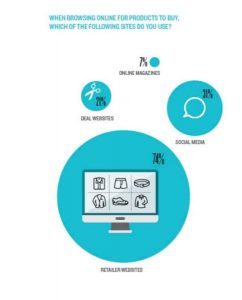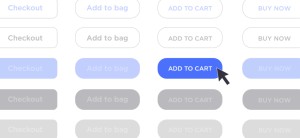When you hear someone talk about “tone” as it pertains to writing, you might flash back to eighth grade English class and whimper a little. And I get that. Tone discussions can be deeply boring. But striking the right tone is essential if you want to reach and connect with your audience, and hitting the wrong tone can confuse and alienate them. So push aside those acne-ridden memories, and listen up.
When to be conversational
As its name indicates, a conversational writing tone is extremely casual and mimics the tics and cadence of spoken conversation. This means that most grammar and punctuation rules are chucked out the window in favor of creating punchy, engaging sentences. Here’s an example of conversational tone that might be used in a newsletter:
“Well friends, let me tell ya. The holidays were straight. up. crazy. Ugh! Sorry things went dark on the blog for a while, but I needed a breather. Thrilled to be back, though, and eager to start the New Year with all of you.”
Conversational tone is ideal for personality and lifestyle bloggers, edgy or creative businesses, and anyone whose overall brand relies on humor or audience intimacy. Conversational tone is inappropriate for government agencies, conservative or traditional businesses, and most business to business communication. If you want your readers to think of you as a friend and confidant, conversational will work. If you want your readers to think of you as an authority, expert, or venerable entity, conversational will backfire spectacularly.
When to be casual
Casual is just a smidgen more formal than conversational. When using this tone, you’ll fall back on sanctioned grammar and punctuation rules and rely more on word choice to keep things light. Here’s an example of casual tone that might be used in a newsletter:
“Welcome back, everyone! Matt and I are STILL recovering from our New Year’s Eve hangovers, if you can believe it. (And even if you can’t believe it, it’s totally true.) We’re excited to be back in action now, though, and can’t wait to take your January orders.”
Casual tone is ideal for subject matter experts, authors, small businesses, and some artists. This tone is also a great choice for anyone who has a fairly straight-laced public or online persona, but wants the newsletter to be a vehicle for getting more personal and intimate with loyal fans and customers. Like conversational, casual won’t work for government agencies, conservative or traditional businesses, though it can be a good choice for B2B in some cases.
When to be formal
Don’t confuse “formal” with “stodgy.” It’s definitely possible to strike a formal tone without sounding like a fuddy-duddy. Formal tone adheres to traditional writing forms and norms, avoids slang, and creates an impression of trustworthy authority. Here’s an example of formal tone that might be used in a newsletter:
“Happy New Year from the entire team here at corporate headquarters! We hope you all had a festive and relaxing holiday season. Our staff took a much-needed break, but everyone is back now and eager to help with any requests you might have. Please let us know how we can make your life easier.”
Formal tone is ideal for corporations, luxury service providers, government agencies, lawyers, doctors, and anyone or any entity seeking to create some respectful distance between provider and customer. Formal tone isn’t inappropriate under any circumstances, but may not be the best choice for a person or organization that prioritizes friendliness and approachability. This tone isn’t about intimacy as much as creating a trustworthy written persona.
You may find that the perfect tone for your newsletter communications is a mixture of two tones, and you may tweak your tone depending on the subject matter. But picking and sticking with a tone that suits your brand and business will help you foster strong relationships with your customers and fans.
(319)






